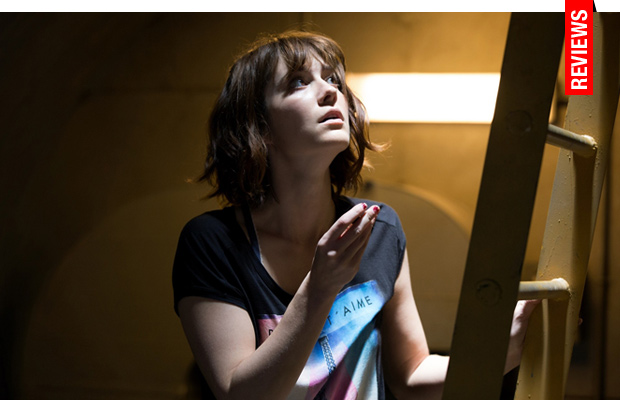The Monsters Are Due on Maple Street: Trachtenberg’s Debut Promises a Franchise
In the midst of a possible break-up, Michelle (Winstead) abandons her relationship, scrabbling together belongings before cruising down a quiet stretch of highway in Louisiana, just north of Lake Charles. Just as an ominous radio news program announces an alarming black-out, her car is thrown off the road and goes spinning through the air. When she awakens, she finds herself cuffed in a desolate, subterranean room owned by Howard (John Goodman), an ex-Navy man who has built a self-sufficient shelter beneath his farm house. Michelle is told the air is toxic, and something has decimated the populous above. She has strange recollections from the accident and something seems rather bizarre about Howard’s behavior. The presence of injured young man Emmett (John Gallagher, Jr.), who has known Howard for years and was able to barge his way into the shelter right before hell broke loose up above, doesn’t assuage her suspicions. As days go by and her injuries heal, it is obvious Howard isn’t telling the truth about some things. Building an alliance with Emmett, Michelle makes an escape plan, though she’s not altogether prepared for what’s going on above their heads.
Strangely, the domestic drama making up most of 10 Cloverfield Lane (a scenario which also bears a resemblance to the recent Room) is way more compelling than the aggressive extraterrestrials who make an appearance in the last act, even though it gives Winstead to show off the kind of steely resilience earning her various comparisons to Sigourney Weaver’s iconic Ripley character from the Alien franchise. At its best, the film casts a tantalizing shadow of anxiety over John Goodman’s Howard, a creepy figure who sometimes appears sympathetic because we’re made to believe we understand some of his actions. Goodman is in rare form here, avoiding his recent stint of appearances swooping in as a hammy caricature of comic relief. Gallagher’s character is less finely drawn, a simpleton who steps out of character as improbably articulate.
But by far the best narrative asset is how Trachtenberg’s film dances around the subtext of Howard’s shelter—did he really build it as a mode of survival or for more insidious means? Several details would support the latter, especially considering he didn’t consider how a man of his comportment would reach the air filtration system on the outside should there be any scenarios requiring he also be locked inside. But it’s these tensions which help 10 Cloverfield Lane seem like a breath of fresh air, avoiding obvious flourishes until it’s forced to relent to the wishes of its stakeholders. Though if it’s another franchise everyone’s after, as the open-ending would indicate, whatever chapter follows Trachtenberg’s installment has impossible shoes to fill.
★★★½/☆☆☆☆☆
